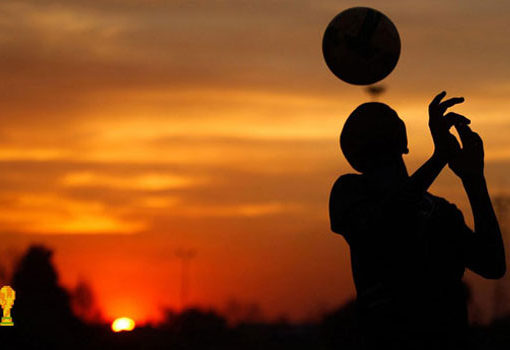
The dan tien (single point, center of energy or sea of qi) is not located by measuring in inches or finger widths. Rather it is found by feeling. The dan tien is often described as being located varying distances inferior (below) the navel. Commonly the distance of two inches or three finger widths is used. Using a particular distance to find the dan tien may be misleading in a number of ways. Inches and finger widths vary. Also, as the navel is the point of orientation, one may be biased to believe that the dan tien is in a certain place in the front body. This is not the case. The reality is that the dan tien is a feeling place somewhere in the middle body or roughly half-way between the front of the body and the back of the body. Some say that is is located in the small intestine region (see curls in above photo resembling small intestine).
One way to experience the dan tien is with the breath and conversely one aspect of breathing is to experience the dan tien. Bringing the awareness of the breath in the dan tien is a common meditation practice. Breathing is a useful tool to give the meditation a feeling-sense rather than engaging a visual or mental focus. Breathing in the dan tien can be a useful practice to “tune into our breathing,” “get out of our heads”, and get into our body-mind. The quiet easeful breath can allow you to become more aware of your internal state. One aid to bear in mind is to “inhale thin and deep, exhale slow and long.”
First we use the mind (consciousness) to direct our breathing in the dan tien. The then established rhythm of respiration in the body sets the impetus to continue the cellular involvement of breathing without the conscious mind needing to direct or interfere. At this point, the mind becomes a distant witness. The “body breathing itself” manifests the cycle of expanding and condensing. Filling (expansion) initiates in the dan tien, the energetic center of the belly, and fills the soma (body-mind) to the periphery and skin surface. Emptying (condensing) returns the fullness of the soma to the dan tien. It is not an airy “breath” but rather is the flow of respiration that sequences through the cellular neighborhood.
Through practice of either stillness in sitting, stillness in standing, slow walking and eventually during qigong, this feeling ultimately releases to open way to complete emptiness, the embodied space of the constant eternal void from which expansion arises and into which condensing sinks.
Breathing, more properly termed ventilation, is the filling and emptying of the lungs with air. Respiration is the exchange of oxygen and carbon dioxide at the cellular level in the cells of the lung and at the tissue level. It is not simply the passage of air into and out of the lungs. The body itself generates cellular respiration. Respiration happens at the cellular level and the lungs are merely bags, although highly sophisticated ones at that.
To sum-up and add one more piece, the dan tien is a feeling place in the low belly somewhat midway between the skin on the front of the body and the skin on the back of the body. One way it can be “found” is through practice where the breath originates and returns in the mid-low belly. As the breath originates in the dan tien, it flows sequentially (like continuous ripples) to the periphery- the head, pelvis, fingers, toes and surface of the body. The breath then cycles back from the periphery to the dan tien. This takes practice.
After sequential flow of breath becomes mastered and the cellular nature of the body awakens, then the sequential aspect of the breath is released to give way to a more primitive, essential form of respiration, simultaneous expanding and condensing. We return to likeness of the universe and all things in the cycle of ebbing and flowing, waxing and waning, coming and going, rising and falling. You get the idea.
Now, we have been connecting the breath with expanding and condensing. As qi manifests in the body, it is independent of the breath. The breath is simply a tool to contact qi. Once this happens, then the movement of qi, its rise and fall, its flow along the yin and yang pathways of the body is a felt sense. Not a visual or conceptual idea but a felt experience. Just like feeling a hand stroking your skin or the closing and opening of a fist or the sense of hunger in the belly. Qi is a felt quality. As an advanced exercise, you can then play with juxtaposing the flow of breath and qi or the merging of breath and qi. Enable your feeling state to practice this and more deeply balance and refine your system. It will also liberate you from the confines of the conscious mind. Be gentle with your intention and go with the flow.
After a practice session our cells have received another lesson and are coming home to their innate intelligence. We let go of technique, just breathe and trust our inner nature to guide us.
With all of this complexity on breathing and qi, a reminder that if you are breathing at all, you are doing A-OK!




2 thoughts on “Breathing in the Dan Tien”
dear Bob, I loved Breathing in the Dan Tien…very poetic and inspiring…
Thank you, remo
dear Bob, I loved Breathing in the Dan Tien…very poetic and inspiring…
Thank you, remo